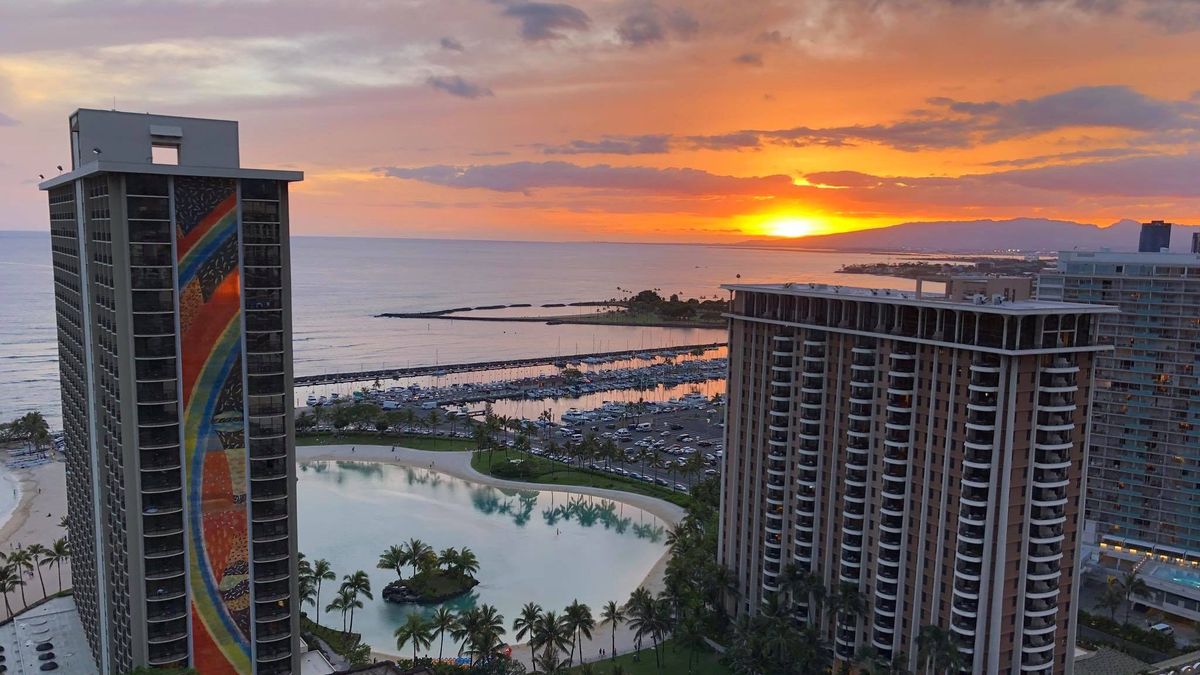Science
ARVO 2018 – Part 2

In this article:
The annual Association for Research in Vision and Ophthalmology (ARVO) conference moved off mainland America to Hawaii for the first time in May 2018, which I'm sure helped to boost attendance and was a much shorter travel time for us Australasians. With over 10,000 attendees and thousands of research posters, papers and symposiums presented over 5 days, it was a mind blowing nerdy extravaganza. Here are a bunch of cutting edge research pieces which I posted to the Myopia Profile Facebook group at the time. I've decided to accompany them with beautiful Hawaiian sunset photos I took during our visit.
4 - Rotationally asymmetrical treatments?
Should our myopia treatments be rotationally symmetrical? Two posters I want to tell you about. The first is by Dr Nicola Logan from Aston University, who showed a higher level of relative peripheral hyperopia in the nasal than temporal retina in both children and adults. The nasal retina was more plus by about 2.5D in children and 1.5D in young adults compared to the temporal retina. While we don’t know which bits drive which components of eye growth, this could have implications for how we impose relative peripheral retinal defocus - should designs be asymmetric to account for this? Stabilising an asymmetric lens design on a spherical cornea would be a big challenge.
And the second paper: researchers from Tianjin University Hospital in China found better myopia control effects in OK wearers with asymmetrical corneal topographical changes. A bunch of clever analysis was done to describe overall asymmetry - essentially, an uneven mid peripheral ring on OK topography was associated with better myopia control.
So I’ve got a few ideas on this. We don’t want to purposely fit decentring or tilting OK lenses and often have little control over these two outcomes anyway. I don’t know of any lens designs which could do this intentionally, and as for the above, how would you stabilise it, and which bit of the cornea needs more plus? My take on it is simpler - I think this speaks to a dose dependent relationship where more plus is better (as you get with a tilted lens / uneven ring - more steepening on one side and less on the other) and perhaps to the differential signals between distance correction and the steepened ‘plus’ or ‘treatment’ zone. We all want to know if more plus is better with OK (likely yes) and if changing lens design can actually change the retinal defocus magnitude or zone size - watch this space!
5 - NaturalVue lenses in clinical practice
A hot topic for Myopia Profilers is the new kid on the block for myopia management - the Visioneering Technologies NaturalVue lens. Thomas Aller, clinician-scientist from California, USA and MVP contributor to Myopia Profile, presented his poster on NaturalVue findings in clinical practice. Tom fit 26 children with NaturalVue for 6 months, where around 60% had been in other myopia control corrections and around 40% were new to his practice - wearing single vision distance specs or no correction at entry to the study. Refractive progression was slowed down by 80% compared to historical progression, and axial growth reduction was around 50%, in those children for whom axial length data was available (ie. none of the new kids). This sits well alongside Jeff Cooper's case series analysis of Naturalvue across 10 practices, showing similarly strong results.
Limitations include no concurrent control group and being a short term study, because generally the most impressive results are seen in the first 6-12 months of myopia control studies, so we eagerly await the longer term data - nonetheless this is a noteworthy data set. It’s interesting to also consider the 60% who were already in myopia control corrections, some even in combination with atropine, who for whatever reason were willing to change and appeared to see an improved result. Is the lens or the optical change the secret sauce? The summary: 6mth wear NaturalVue -0.06+/-0.30D (0.16+/-0.13mm axial length) vs -0.43+/-0.36D (0.08+/-0.10mm) in prior corrections.
And as you can see in the picture of Tom and I, extra marks for Tom’s endless parade of Hawaiian shirts and the lei made of real flowers!
Meet the Authors:
About Kate Gifford
Dr Kate Gifford is an internationally renowned clinician-scientist optometrist and peer educator, and a Visiting Research Fellow at Queensland University of Technology, Brisbane, Australia. She holds a PhD in contact lens optics in myopia, four professional fellowships, over 100 peer reviewed and professional publications, and has presented more than 200 conference lectures. Kate is the Chair of the Clinical Management Guidelines Committee of the International Myopia Institute. In 2016 Kate co-founded Myopia Profile with Dr Paul Gifford; the world-leading educational platform on childhood myopia management. After 13 years of clinical practice ownership, Kate now works full time on Myopia Profile.
Enormous thanks to our visionary sponsors
Myopia Profile’s growth into a world leading platform has been made possible through the support of our visionary sponsors, who share our mission to improve children’s vision care worldwide. Click on their logos to learn about how these companies are innovating and developing resources with us to support you in managing your patients with myopia.











